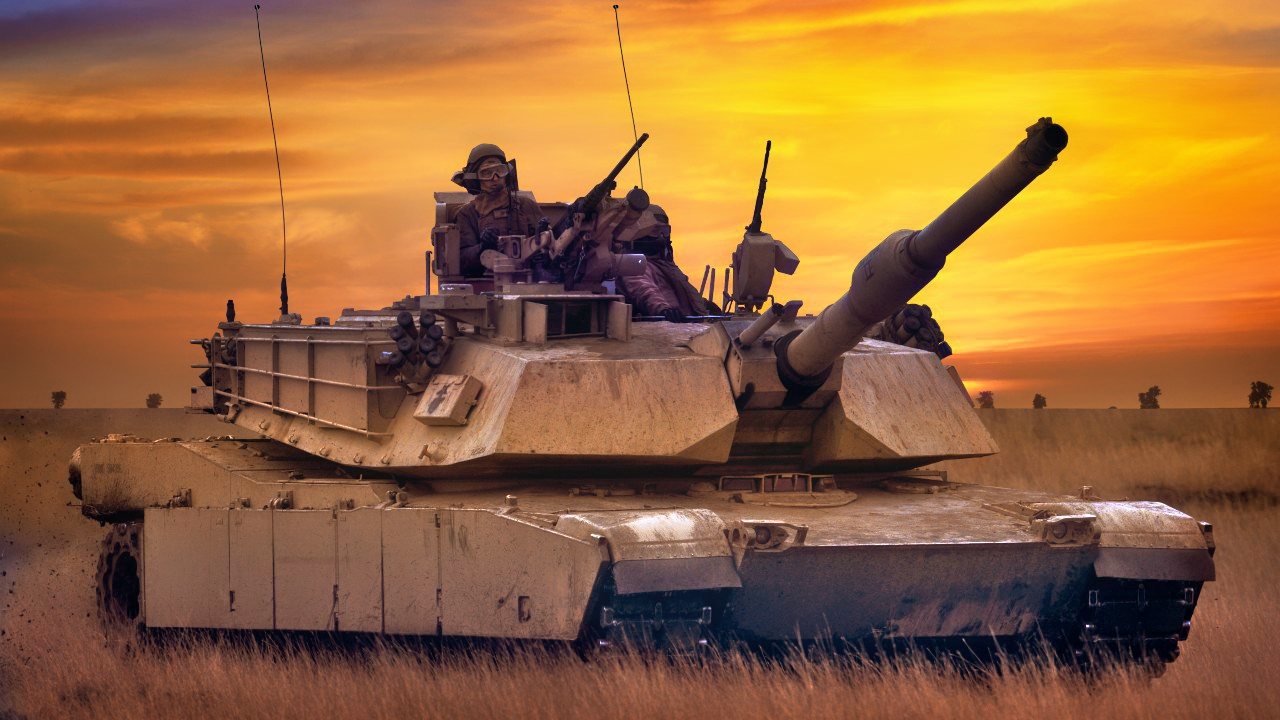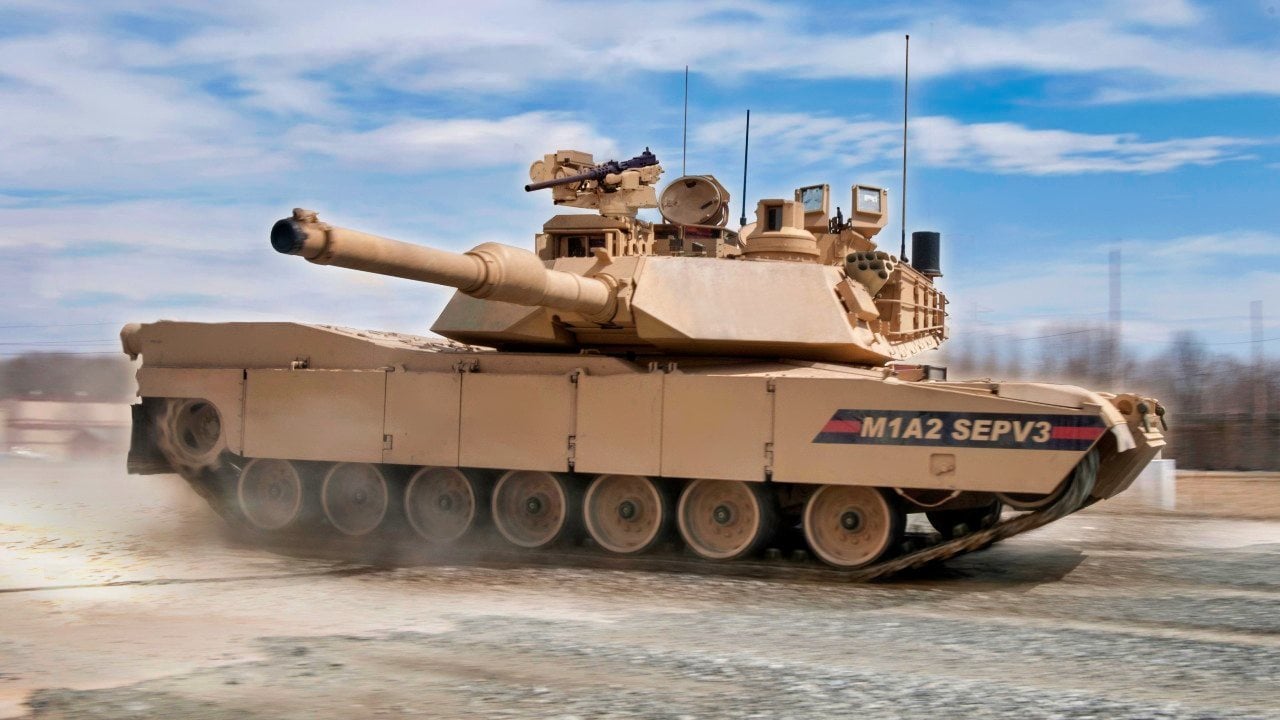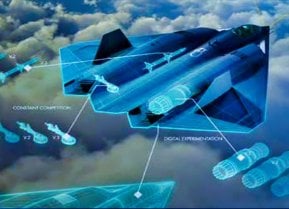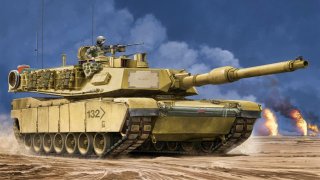You Don't Ever Want to Fight the Army's M1 Abrams Tank
The M1 Abrams, developed in the 1960s and 1970s, is known for its Chobham armor and advanced weaponry. The latest variant, the M1A2 SEPv3, features enhanced armor, networking, and modular design, ensuring its relevance into the 2040s.
Summary and Key Points: Russia's invasion of Ukraine underscores the crucial role of main battle tanks (MBTs) in modern warfare.

-Both Russia and Ukraine have deployed various MBTs, with Western nations supplying Ukraine with advanced tanks like the M1 Abrams, British Challenger, and German Leopard 2.
-The M1 Abrams, developed in the 1960s and 1970s, is known for its Chobham armor and advanced weaponry.
-The latest variant, the M1A2 SEPv3, features enhanced armor, networking, and modular design, ensuring its relevance into the 2040s.
The Evolution of the M1 Abrams: From Concept to Combat Powerhouse
Russia's invasion of Ukraine underscores the continued importance of main battle tanks (MBTs) in modern warfare. Both Russia and Ukraine have deployed various MBTs, with Western nations supplying Ukraine with advanced tanks like the M1 Abrams, British Challenger, and German Leopard 2.
The M1 Abrams, a staple of U.S. armored forces, was developed in the 1960s and 1970s, featuring Chobham armor and advanced weaponry.
The latest variant, the M1A2 SEPv3, boasts heavier armor, enhanced networking, and modular design for future upgrades, positioning it to lead the U.S. Army's armored corps into the 2040s.
Russia’s ongoing invasion of Ukraine has highlighted the critical role main battle tanks (MBTs) continue to play in modern warfare. While these armored vehicles have been around for seventy-plus years, they still prove to be instrumental in enabling large-scale offensives and ensuring the effectiveness of defensive strategies in conflict. Both Moscow and Kyiv have deployed a wide array of MBTs to the front lines, including Soviet-era designs and World War II-era relics alike. In order to aid Ukraine’s defensive efforts, the United States and its NATO allies have also committed to providing its forces with several more modern tank platforms, including the American-made M1 Abrams, British Challenger, and German Leopard 2. All of these Western variants are considered to be more sophisticated than their Soviet counterparts. The Abrams family of tanks, however, stands out for its role as the mainstay of the U.S. armored corps for decades.
The M1 Abrams Tank: Origin Story
The Abrams series of tanks was conceptualized back in the 1960s, when the U.S. Army collaborated with its West German counterparts to create a joint MBT model that could replace the aging M60 and Leopard 1 tanks. While the financial and design roles of both nations were initially agreed upon, budgetary issues and other disagreements ultimately led to the collapse of the project. U.S. engineers spearheaded an offshoot program the following decade to develop a modified variant of the MBT-70. However, exorbitant costs associated with the new tank led the Department of Defense to nix the program altogether. By the early 1970s, the Army would begin to piece together what would become the basis for the M1 Abrams platform.
Perhaps the most significant component of the initial Abrams model at the time was its Chobham armor. The incredibly thick armor was designed to perform extremely well against HEAT rounds and other shaped charges. Unlike the preceding M60 tank which featured armor around four inches thick, the new Abrams would be fitted with roughly two feet of Chobham armor. In addition to becoming the first tank of its kind to sport this advanced armor, the Abrams was also armed with the new license-built M68A1 version of the 105mm Royal Ordnance L7 gun.
Introducing the Latest SEPv3 Abrams Variant
As threats evolved over the years, so did the Abrams’ variants. The most modern iteration of the Abrams family is the M1A2 System Enhanced Package 3 (SEPv3). This powerhouse of an MBT packs heavier armor than its preceding variants, including explosive reactive armor mountings. The SEPv3 is also fitted with enhanced network capabilities, greater electrical power, and improved forward-looking infrared to better detect targets. The most significant improvement made to the SEPv3 variant is arguably its modular design, which allows for future technologies to be incorporated more seamlessly.
While other detailed specs concerning the tanks’ future capabilities have yet to be divulged, analysts with Sandboxx News have outlined some potential new features, which include “a hybrid electric drive, an autoloader and new main gun, advanced munitions, such as maneuvering hypersonic and gun-launched anti-tank guided missiles, integrated armor protection, improved command, control, and networking capabilities, artificial intelligence (AI) applications, ability to pair with robotic vehicles, masking capabilities to reduce the vehicle’s thermal and electromagnetic signature, reduced weight, hybrid electric diesel engine 50 percent more fuel efficient than the current Abrams, unmanned turret which would reduce the crew from four to three soldiers, and enhanced anti-drone technology.”

When the SEPv3 variant is officially introduced, it is expected to lead the Army’s armored corps well into the 2040s.
About the Author: Maya Carln, Defense Expert
Maya Carlin, National Security Writer with The National Interest, is an analyst with the Center for Security Policy and a former Anna Sobol Levy Fellow at IDC Herzliya in Israel. She has by-lines in many publications, including The National Interest, Jerusalem Post, and Times of Israel. You can follow her on Twitter: @MayaCarlin.
All images are Creative Commons or Shutterstock.
From the Vault
Russia Freaked Out: Why the U.S. Navy 'Unretired' the Iowa-Class Battleships
Battleship vs. Battlecruiser: Iowa-Class vs. Russia's Kirov-Class (Who Wins?)


